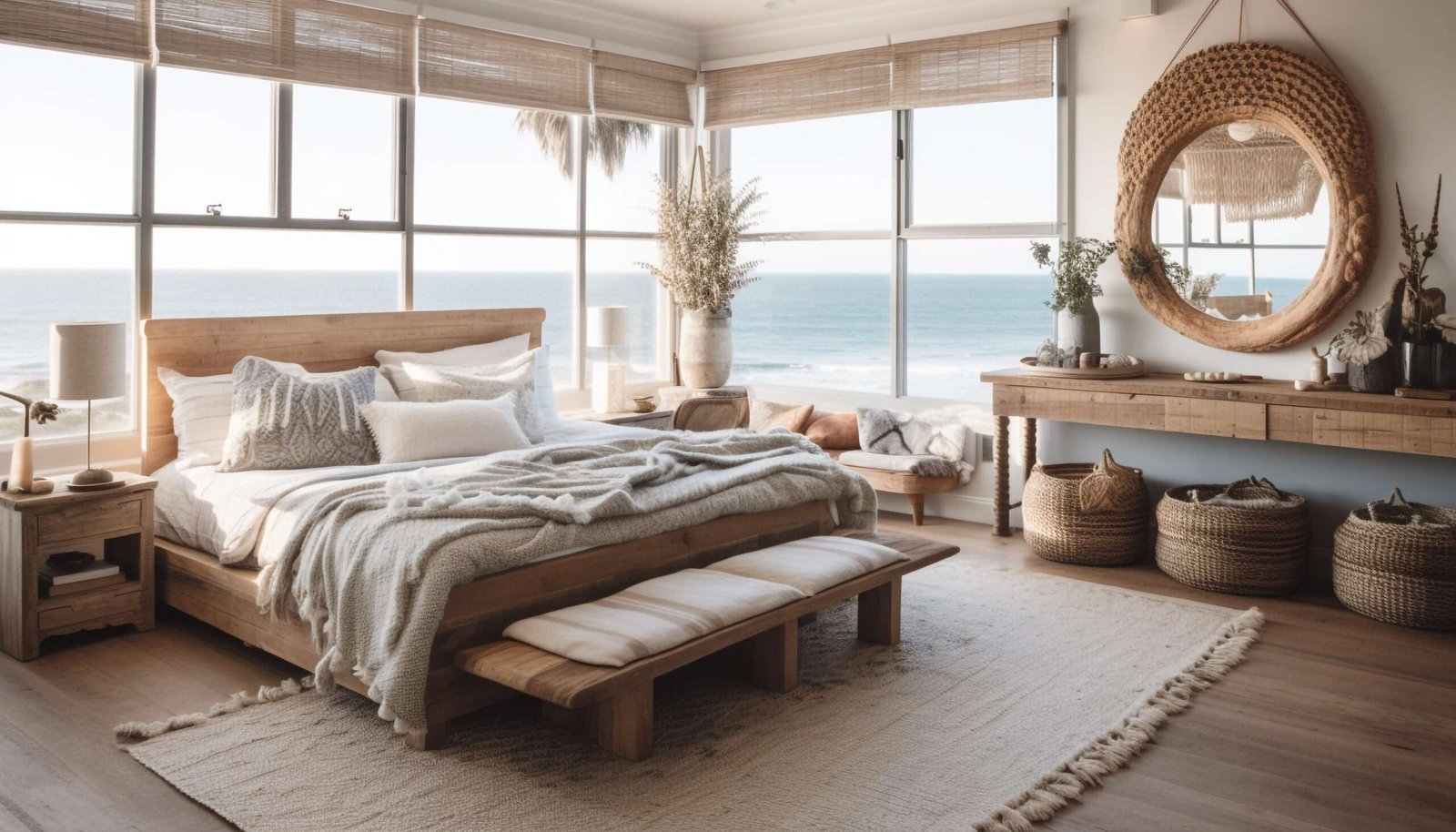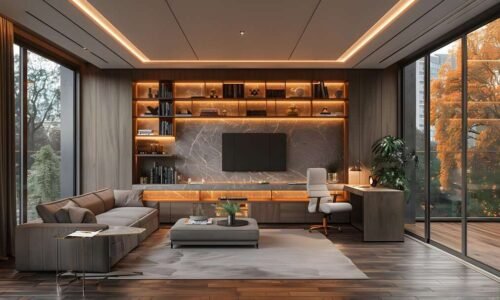Creating a personal sanctuary within the home is a universal aspiration. It’s not just about having a bed to sleep in; it’s about curating a space that feels uniquely ‘you’ and serves as your haven from the world.
In recent years, the cute aesthetic bedroom trend has taken over social media, with its cozy, stylish, and often thematically consistent decor inspiring people across all age groups to transform their sleeping quarters into Instagram-worthy retreats.
This trend is particularly popular among home decor enthusiasts, interior design lovers, and millennials, who understand that the environment we nurture can significantly impact our well-being.
In this post, we’ll explore cute aesthetic bedroom ideas for all ages, blending real-world examples with tips and tricks on achieving these looks and why they are more than just a trend—they represent the next level of personal space design and well-being.
Whether you’re an adult wanting to revamp your main bedroom, a teen yearning for a Pinterest-worthy boudoir, or a parent looking for kid-friendly but stylish designs, this post is your ultimate guide.
Aesthetic Bedroom Ideas for Adults
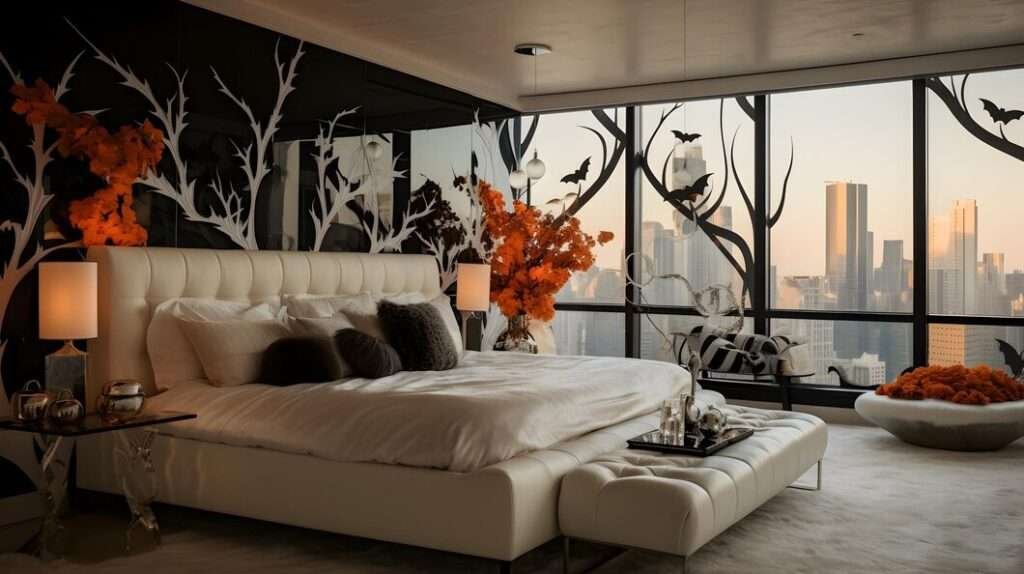
The Modern Cottage
Imagine a hybrid of sleek modern lines with the rustic charm of a cottage by the sea. The contemporary cottage aesthetic is all about soft, neutral palettes with pops of blue or green, reminiscent of nature and the ocean. Incorporate these into your bedding, rugs, and throw pillows. Furniture with simple, elegant designs in light-colored woods can also open up space and give a feeling of airiness to the room.
The Boho Eclectic
If you’re a free spirit who loves texture and patterns, then the boho eclectic aesthetic is for you—layer textiles such as Moroccan rugs, macramé wall hangings, and sheer curtains. A key element is also the presence of plants—lots of them. Dangling plants or distinctive planters add life and height to the room.
The Minimalist Zen
For those who seek peace in a less-is-more philosophy, the minimalist zen aesthetic fosters a calming, uncluttered space. Stick to a monochromatic color palette with the occasional pop of color to bring tranquility without monotony. Use hidden storage solutions and keep furniture to a minimum to create a sense of openness.
Aesthetic Bedroom Ideas for Teens
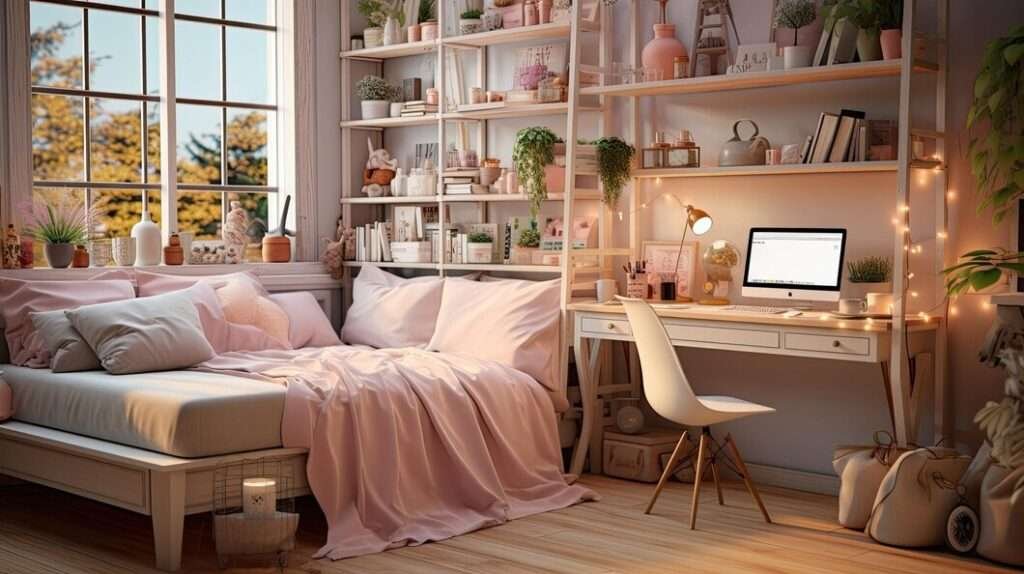
The Pastel Dream
Pastel colors and whimsical elements bring a dreamy quality to any teen’s bedroom. This aesthetic is all about softness and light, so choose a light color scheme and simple, clean furniture. Add playful accents with fairy lights, tulle canopies, or a galaxy of paper stars on the ceiling.
The Edgy Urban
For the teen in touch with their wild side, the edgy urban aesthetic is a fusion of industrial chic and pop culture. Think exposed brick or pipes, graphic art on the walls, and a neon sign. Keep the color scheme monochromatic with bold accents to make a statement.
The Tailored Preppy
The tailored preppy aesthetic is a perfect fit for the teen who loves classic shapes and patterns but with a modern twist. Incorporate bold stripes or geometric patterns with a mix of plaids and polka dots. Keep the color palette vibrant yet sophisticated, and add a gallery wall with framed vintage or modern art.
Aesthetic Bedroom Ideas for Kids
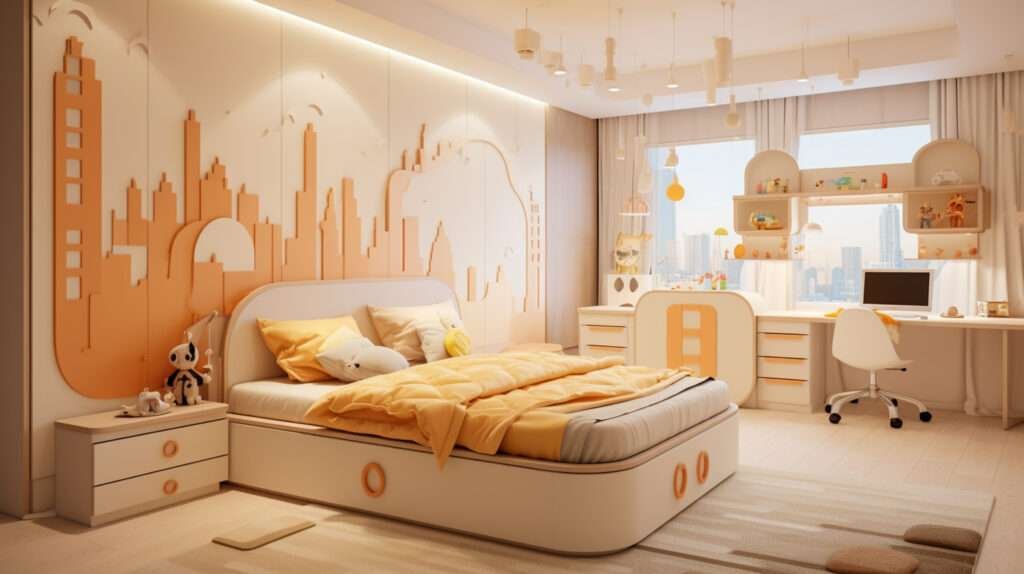
The Playful Wonderland
For the youngest aesthetic enthusiasts, the playful wonderland aesthetic is all about imagination. Use bright, primary colors as a backdrop and mix in whimsical decor like hot air balloon mobiles, starry night canopies, and interactive wall art. The key here is to create a space that sparks creativity and fun.
The All-Grown-Up Kid Zone
The goal of the all-grown-up kid zone aesthetic is finding the balance between kid-friendly and chic enough to grow with them. Choose a more neutral palette that allows the child’s interests to change without requiring a complete redecoration. Invest in quality, multifunctional furniture that can serve different purposes over the years.
The Whimsical Woodland
A woodland-inspired aesthetic for kids’ bedrooms offers warmth and a connection to nature. Use earthy tones for the walls and incorporate elements from the forest—tree branch hooks for clothes, animal-shaped cushions, and perhaps a bed with the form of a cozy cottage in the woods.
FAQ
Q: What is the key to creating an aesthetic bedroom?
A: The key is finding a style that resonates with you and incorporating elements of that style in your bedroom decor. Personalize it with items that reflect your interests and hobbies.<br>
Q: How can teens create a cohesive aesthetic on a budget?
A: Get creative! DIY projects, thrift store finds, and repurposing items you own can help save money while achieving a cohesive aesthetic. Feel free to mix and match different styles and colors.
Q: What is the best way to incorporate storage solutions in an aesthetic bedroom?
A: Invest in hidden storage solutions that can also serve as decor, such as under-bed storage bins or bookshelves with decorative baskets. Utilizing wall space for shelves or hanging organizers helps keep clutter at bay while adding to the room’s overall aesthetic.
Q: How can parents balance style and functionality in a kid-friendly bedroom?
A: Look for stylish and practical furniture, such as bunk beds with built-in storage or desks with drawers. Incorporate fun and playful elements that can easily be replaced as the child grows, but also invest in quality staples like neutral walls and durable flooring.
Conclusion
In a world that can often seem chaotic and disconnected, a cute aesthetic bedroom is a reminder that we have the power to cultivate beauty and order in our immediate surroundings.
Whether you’re an adult looking for a sophisticated space to unwind, a teen expressing individuality, or a child seeking comfort and fun, these aesthetic bedroom ideas provide a canvas for creating your perfect retreat.
Bringing these ideas to life is as rewarding as the result, and the only limit is your imagination. With a mix of planning, creativity, and a personal touch, you, too, can have an aesthetic bedroom that’s aesthetically pleasing and a true expression of self. After all, your home is your story—what do you want it to say?

